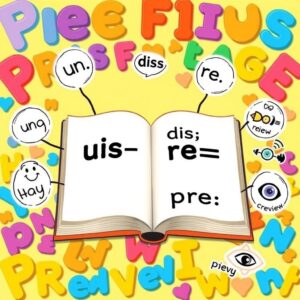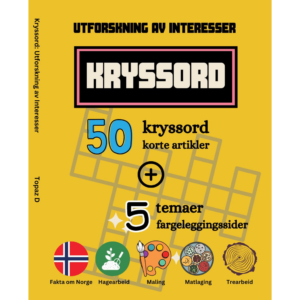
Explore & Play
Discover interesting topics and solve the accompanying crossword puzzle.
Music Crossword | Understanding Musical Terms
Table of Contents
Welcome to the music crossword puzzle! At the beginning of this article, we’ve provided a music-themed crossword puzzle for you.
If you’re already familiar with music terms and concepts, feel free to tackle the puzzle first to test and reinforce your knowledge. If you’re not as familiar with these terms yet, don’t worry! You can start by reading the article below to learn about rhythm, harmony, and other music elements, and then return to the crossword puzzle to see how your newfound knowledge helps you solve it.
Regardless of how you choose to proceed, we hope you enjoy this educational journey!
Music Crossword
You can either fill in the crossword puzzle directly on this page or click the button in the bottom right corner to print it for free.
Understanding Musical Terms: A Guide to Tempo, Rhythm, and Harmony
Music, in its many forms, uses a rich vocabulary to convey its complexities. Understanding musical terms like tempo, rhythm, and harmony is crucial for both performers and listeners. These terms are the building blocks of music, defining how pieces are played, structured, and experienced. In this article, we will delve into each of these elements, exploring their definitions, significance, and practical applications. Additionally, we will look at a crossword puzzle designed to reinforce these concepts and test your knowledge.
Tempo: The Pace of Music
Tempo refers to the speed at which a musical composition is performed. It plays a crucial role in defining the mood and energy of a piece. Terms such as Allegro, Andante, and Adagio describe various tempos that guide musicians on how fast or slow to play.
- Tempo: The core concept of speed in music. It determines how quickly the beats are played, affecting the overall feel of the piece.
- Allegro: This term indicates a fast tempo, often conveying excitement and joy. It’s commonly used in lively and energetic compositions.
- Andante: A moderate tempo, often described as a walking pace. It creates a balanced, steady rhythm that is neither too fast nor too slow.
- Adagio: Signifying a slow tempo, Adagio is used to evoke calmness, serenity, or melancholy. It allows for expressive and contemplative playing.
How Tempo Affects Performance
Tempo plays a crucial role in shaping the interpretation and emotional impact of a musical piece. The speed at which music is played—whether fast or slow—affects not only the mood but also the technical execution and expressiveness of the performance.
When a piece is played at a fast tempo, such as Allegro, it generally conveys a sense of energy and excitement. This tempo is often associated with lively and upbeat compositions, making the music feel dynamic and vibrant. For instance, a symphony or a dance piece performed at Allegro can engage the audience with its brisk pace and lively rhythms, encouraging a more animated and enthusiastic response. Fast tempos often require quick fingerwork and precise timing from the performers, which can enhance the overall sense of exhilaration and vitality in the music.
In contrast, a piece played at a slow tempo, such as Adagio, creates a different emotional atmosphere. Slow tempos are typically used to evoke feelings of calmness, introspection, or melancholy. For example, a slow movement in a concerto or a contemplative solo piece performed at Adagio allows for a more deliberate and expressive interpretation. The extended duration of each note and phrase provides the performer with the opportunity to convey deeper emotional nuances, such as tenderness, sadness, or tranquility. Listeners often experience a sense of reflection or serenity when engaging with music played at a slower tempo.
The shift in tempo not only alters the mood of the music but also influences the performer’s approach to phrasing and articulation. At a fast tempo, the performer might emphasize rhythmic precision and vigorous articulation to maintain the energy of the piece. Conversely, at a slow tempo, the focus may shift to nuanced dynamics and expressive phrasing, allowing for a more detailed and emotive delivery.
Rhythm: The Pattern of Beats
Rhythm is the arrangement of beats in music, serving as the foundation upon which melodies and harmonies are built. It involves organizing beats into patterns that create the flow and structure of a piece.
- Rhythm: The systematic arrangement of sounds and silences in music, defining the timing and flow of a composition.
- Beat: The basic unit of rhythm, representing the regular pulse that listeners and performers feel in music.
Types of Rhythmic Patterns
Different rhythmic patterns are essential in adding variety, texture, and expressiveness to music. By altering the way notes are played or articulated, musicians can create a wide range of emotional effects and stylistic nuances. Here, we explore two fundamental rhythmic patterns: Staccato and Legato.
Staccato: This rhythmic pattern involves playing notes in a short, detached manner. In a staccato passage, each note is separated from the next by a brief silence or pause, giving the music a crisp and punctuated quality. This technique is often used to convey a sense of energy, playfulness, or urgency. For example, in a lively piano piece or an energetic orchestral score, staccato notes can create a bouncy, rhythmic feel that drives the momentum of the music. The distinct separation between notes helps to highlight the rhythm and create a staccato articulation that is sharp and impactful.
Musicians achieve staccato by using various techniques depending on the instrument. On the piano, this might involve striking the keys with a quick release. On string instruments, such as the violin, it involves shortening the bow strokes. In wind instruments, staccato can be executed by using a crisp tongue articulation. The staccato effect is often notated with a dot above or below the notehead, indicating that the note should be played with this detached style.
Legato: In contrast to staccato, the legato pattern involves playing notes smoothly and connectedly. When notes are played legato, there are no noticeable breaks or pauses between them; instead, each note flows into the next, creating a seamless, cohesive sound. This technique is used to convey a sense of continuity and fluidity, often associated with lyrical, expressive passages. For instance, in a romantic melody or a flowing orchestral line, legato playing can enhance the emotional depth and smoothness of the music.
Achieving a legato effect requires careful control of the instrument and technique. On the piano, it involves using the pedal to blend notes together. On string instruments, legato is achieved through smooth bow strokes that connect each note. Wind players use a steady, uninterrupted airflow to maintain the smoothness of the sound. In musical notation, legato passages are typically indicated by a slur—a curved line placed over or under a group of notes—signaling that they should be played in a connected manner.
Examples and Applications
Rhythm serves as a fundamental element across all genres of music, shaping the character and feel of compositions. Its application varies significantly between different musical styles, each utilizing rhythm in unique ways to create distinctive moods and effects. Understanding these variations is crucial for musicians, as it helps them convey the appropriate style and emotional tone in their performances. Let’s explore how rhythm operates in different genres and the role it plays in shaping musical expression.
Classical Music: In classical music, rhythm tends to be more structured and predictable. Composers often use well-defined time signatures and rhythmic patterns to create a sense of order and formality. For instance, a Baroque fugue might employ intricate, interwoven rhythms that adhere to strict patterns, while a Classical sonata may feature balanced, symmetrical rhythmic structures. The predictability of rhythm in classical music allows for detailed and precise performances, where the rhythm serves as a foundation for complex melodic and harmonic developments. An example is Beethoven’s “Symphony No. 5,” where the famous four-note motif is rhythmically rigid, contributing to the piece’s dramatic and driving character.
Jazz: Jazz music often features more complex and syncopated rhythms compared to classical music. Syncopation involves placing rhythmic accents on off-beats or weak beats, creating a sense of surprise and groove. In jazz, rhythm is frequently fluid, with musicians employing swing feel and improvisational techniques that deviate from strict rhythmic structures. For instance, a jazz drummer might use brush sticks to create a subtle, swaying rhythm that complements the swing style, while a jazz pianist may play syncopated chords to add harmonic interest. The rhythmic complexity in jazz allows for dynamic expression and interaction between performers, contributing to the genre’s distinctive, improvisational quality.
Electronic Music: Rhythm in electronic music can be highly varied and experimental. Producers and DJs use technology to create intricate rhythmic patterns and beats that may not conform to traditional time signatures. Genres such as techno, house, and drum and bass often feature fast-paced, repetitive beats with complex layering of rhythmic elements. For example, a techno track might employ a steady 4/4 beat with additional syncopated hi-hats and basslines that create a driving, hypnotic groove. Electronic music’s rhythmic patterns can be both precise and fluid, allowing for innovative soundscapes and danceable grooves.
Folk Music: Folk music often incorporates rhythmic patterns that reflect cultural traditions and dance styles. For example, Irish folk music may feature jigs and reels with lively, straightforward rhythms that encourage dancing and communal participation. The use of rhythmic patterns in folk music helps to preserve and convey cultural heritage, providing a rhythmic backdrop for storytelling and traditional performance.
Rock and Pop Music: In rock and pop, rhythm plays a critical role in creating catchy and memorable grooves. The use of strong backbeats, often accentuated on the second and fourth beats of a 4/4 measure, is characteristic of many rock and pop songs. For instance, in a classic rock track like Queen’s “We Will Rock You,” the simple but powerful stomp-stomp-clap rhythm creates a compelling and anthemic feel that engages listeners.
Harmony: The Combination of Tones
Harmony is a fundamental concept in music that involves the combination of different tones played or sung simultaneously. This interplay of tones creates a rich, textured sound that supports and enhances the melodic elements of a composition. Harmony is crucial in shaping the emotional and aesthetic qualities of music, providing depth and context to the melodies and rhythms.
Harmony: At its core, harmony refers to the simultaneous occurrence of different musical notes or chords that create a pleasing and cohesive sound. The combination of these tones can evoke a wide range of emotions, from joy and excitement to sadness and tension. Harmony adds complexity and color to music, allowing composers and performers to explore various emotional landscapes and tonal textures. For instance, a piece of music with complex harmonic structures can create a sense of sophistication and intrigue, while simpler harmonies might produce a more straightforward, serene effect.
Harmony can be described in terms of intervals and chords. Intervals are the distances between two notes, and they can create different harmonic effects depending on their nature. For example, consonant intervals (such as the major third) sound pleasant and stable, while dissonant intervals (such as the minor second) introduce tension and require resolution.
Chord: A chord is a specific type of harmonic structure consisting of a set of notes played together. Typically, chords are built from a root note and additional notes that form intervals above it. The most common chords are triads, which include three notes: the root, the third, and the fifth. Chords can be major, minor, diminished, or augmented, each producing a distinct sound and emotional quality.
- Major Chord: Composed of a root note, a major third, and a perfect fifth, major chords generally sound bright, cheerful, and stable. For example, a C major chord includes the notes C, E, and G.
- Minor Chord: Composed of a root note, a minor third, and a perfect fifth, minor chords often convey a sense of sadness or tension. For instance, an A minor chord consists of the notes A, C, and E.
- Diminished Chord: Includes a root note, a minor third, and a diminished fifth, creating a tense and unstable sound. A B diminished chord has the notes B, D, and F.
- Augmented Chord: Features a root note, a major third, and an augmented fifth, producing a sense of suspense or dissonance. A C augmented chord is made up of C, E, and G#.
Role in Music: Harmony plays several critical roles in music. It provides support to the melody, enriching the overall sound and helping to establish the musical context. Harmony also creates movement and progression, guiding listeners through a piece by introducing changes in tonality and tension. By manipulating harmonic progressions—sequences of chords—composers can build emotional arcs, enhance thematic elements, and create dynamic contrasts.
In classical compositions, harmonic progressions are carefully crafted to adhere to traditional rules of voice leading and tonality. In jazz and contemporary music, harmony might be more experimental, utilizing complex chords and progressions to achieve unique sounds and colors. Regardless of the style, harmony remains a vital component in shaping the character and emotional impact of music, influencing how it is perceived and experienced by listeners.
Dynamics and Expression
Dynamics in music refer to the variations in loudness and intensity that occur throughout a piece. These variations are crucial in conveying the emotional landscape of a composition and adding depth to the performance. Dynamics not only affect how we experience music but also guide the performer in expressing different moods and nuances.
Crescendo: A crescendo indicates a gradual increase in volume over a specified passage. This dynamic term is used to build intensity and excitement, leading to a climactic moment or heightened emotional impact. As a piece progresses through a crescendo, the rising volume creates a sense of anticipation and energy, drawing listeners into the music’s evolving emotional narrative.
- Application in Music: Crescendos are often employed in various musical contexts to enhance dramatic effect. For instance, in a symphonic work, a crescendo might build up to a powerful orchestral tutti (full ensemble) section, creating a moment of grandeur and excitement. In a solo performance, such as a piano piece, a crescendo can add intensity to a phrase, increasing the expressiveness of the music. The gradual nature of a crescendo helps to sustain listener engagement and emphasize key moments in the composition.
- Notational Indicators: In musical notation, crescendos are typically indicated by a symbol resembling a widening angle (<). This sign signals to the performer to gradually increase the volume from the point where the crescendo begins until it reaches its peak.
Decrescendo: Conversely, a decrescendo (or diminuendo) refers to a gradual decrease in volume. This dynamic term helps to create a sense of resolution, calm, or relaxation. As the volume diminishes, the music often transitions to a quieter, more introspective state, allowing the listener to absorb the conclusion of a phrase or section.
- Application in Music: Decrescendos are used to gently wind down a passage or to signal a transition to a more subdued section of the music. For example, in a classical adagio (slow) movement, a decrescendo might lead to a soft, reflective ending. In contemporary music, decrescendos can be used to create a smooth fade-out effect, contributing to the overall emotional arc of the piece.
- Notational Indicators: A decrescendo is usually indicated by a symbol resembling a narrowing angle (>), instructing the performer to gradually decrease the volume from the beginning of the mark until the end.
Role of Dynamics in Expression: Dynamics play a pivotal role in musical expression, as they allow performers to convey a wide range of emotions and dramatic effects. Variations in loudness can influence the mood of the music, from the intense power of a fortissimo (very loud) passage to the delicate subtleness of a pianissimo (very soft) section. By effectively utilizing dynamics, musicians can enhance the storytelling aspect of their performance, guiding the listener through the emotional highs and lows of the music.
How Harmony Enhances Music
Harmony and dynamics are integral elements that work in tandem to shape the character and emotional depth of a musical piece. Together, they create a rich, immersive experience for listeners by providing structural and emotional context. Harmony, with its chord progressions and tonal arrangements, and dynamics, with its variations in loudness and intensity, combine to influence the overall mood and expression of music.
Harmony’s Role: Harmony adds depth to music by combining multiple notes to create chords, which are then arranged into progressions. These chord progressions define the harmonic landscape of a piece, guiding its emotional trajectory and contributing to its overall atmosphere.
- Major Key Progressions: Chord progressions in a major key are typically associated with feelings of brightness, stability, and joy. For example, a common progression such as the I–V–vi–IV (e.g., C–G–Am–F) creates a sense of uplift and positive energy. This progression is frequently used in popular and classical music to evoke cheerful and optimistic sentiments. The major chords within this progression produce a harmonious and pleasing sound that resonates with listeners on an emotional level.
- Example: In Beethoven’s “Ode to Joy,” the use of major chords throughout the melody and accompaniment contributes to its triumphant and celebratory mood. The harmonies create a sense of grandeur and unity, aligning with the piece’s uplifting message.
- Minor Key Progressions: Conversely, chord progressions in a minor key often convey feelings of sadness, tension, or introspection. Minor chords, such as those found in the i–iv–V (e.g., Am–Dm–E) progression, produce a more somber and reflective quality. The diminished and minor intervals introduce a sense of uncertainty or melancholy, which can be used to express deeper emotional themes.
- Example: In Chopin’s “Nocturnes,” the use of minor key progressions helps to evoke a mood of longing and introspection. The shifting harmonies in the minor key provide a rich emotional landscape, enhancing the piece’s contemplative nature.
Dynamics’ Role: Dynamics further refine the emotional impact of harmony by varying the volume and intensity of the music. The interplay between dynamics and harmony can heighten or soften the effect of harmonic progressions, adding another layer of expression to the music.
- Enhancing Major Key Progressions: When major key progressions are played with a crescendo, the sense of joy and brightness can be amplified, creating moments of heightened emotional intensity. Conversely, a decrescendo can gradually bring the music to a more reflective or tranquil state, maintaining the positive atmosphere while shifting the focus.
- Example: In a joyful orchestral piece, a crescendo leading into a major chord can intensify the uplifting effect, making the climactic moments more impactful and engaging for the audience.
- Enhancing Minor Key Progressions: In minor key progressions, dynamics can emphasize the inherent tension or sadness. A sudden fortissimo (loud) passage might heighten the emotional impact of a minor chord, while a pianissimo (soft) passage can create a delicate, introspective atmosphere.
- Example: In a melancholic solo piano piece, a decrescendo following a series of minor chords can enhance the sense of resolution and emotional depth, allowing the music to fade gently and leave a lasting impression.
Integration of Harmony and Dynamics: The effective integration of harmony and dynamics is essential for creating a compelling and emotionally resonant musical experience. By carefully crafting chord progressions and dynamically varying their execution, composers and performers can guide the listener through a nuanced emotional journey. Harmony provides the structural foundation, while dynamics add expressive nuance, together shaping the character and depth of the music.
Integration of Tempo, Rhythm, and Harmony
The interplay between tempo, rhythm, and harmony is what creates the distinctive character and emotional impact of music.
How These Elements Work Together
Tempo, rhythm, and harmony are foundational elements in music that interconnect to shape the overall feel and emotional impact of a piece. Each of these elements contributes uniquely to a composition, and their interactions create a cohesive and engaging musical experience. Understanding how these elements work together helps performers and composers craft pieces that effectively convey their intended emotions and stylistic characteristics.
Tempo: Tempo refers to the speed at which a piece of music is played. It sets the pace and energy level of the music, influencing the overall mood and driving the rhythmic patterns. For instance, a fast tempo generates excitement and urgency, while a slow tempo evokes calmness and reflection.
- Fast Tempo: A piece played at a fast tempo, such as Allegro or Presto, typically feels lively and energetic. This brisk pace can enhance rhythmic complexity and encourage a sense of movement and vitality. In genres like dance music or upbeat classical compositions, a fast tempo combined with intricate rhythms and rich harmonies can create a dynamic and engaging performance.
- Example: In a lively jazz ensemble, a fast tempo paired with syncopated rhythms and vibrant chord progressions can produce an exhilarating and interactive experience. The rapid pace energizes the rhythm, while the complex harmonies contribute to the music’s richness and depth.
- Slow Tempo: A piece performed at a slow tempo, such as Adagio or Largo, often feels more contemplative and serene. The slower pace allows for more deliberate articulation of rhythms and a deeper exploration of harmonic nuances. This can create a reflective atmosphere where the music unfolds slowly, providing space for emotional expression.
- Example: In a classical piano sonata, a slow movement with steady rhythms and simple harmonies can convey a sense of introspection and tranquility. The deliberate pace allows each note and chord to resonate, creating a meditative and emotionally rich experience.
Rhythm: Rhythm involves the pattern of beats and the arrangement of notes in time. It provides the structure and flow of a piece, influencing its groove and overall feel. Rhythmic patterns, including syncopation, accents, and rhythmic motifs, play a crucial role in defining the character of the music.
- Syncopated Rhythms: Rhythms that emphasize off-beats or weaker beats can create a sense of surprise and drive. Syncopation introduces a level of complexity and unpredictability, adding to the music’s vitality and engagement.
- Example: In a contemporary dance track, syncopated rhythms combined with a fast tempo and complex harmonies can create a compelling and danceable groove. The interplay of syncopation with energetic beats enhances the music’s dynamic quality and encourages movement.
- Steady Rhythms: Steady, straightforward rhythms often provide a stable foundation and contribute to a more predictable and cohesive feel. These rhythms can support a more relaxed or introspective mood when combined with slower tempos and simpler harmonies.
- Example: In a traditional folk song, a steady rhythm with a slow tempo and uncomplicated harmonies can create a comforting and familiar sound. The rhythmic consistency supports the melody and allows the harmonic elements to shine through.
Harmony: Harmony involves the combination of different notes played simultaneously to create chords and chord progressions. It provides the harmonic context and emotional color of a piece, influencing its mood and expressive qualities.
- Rich Harmonies: Complex and rich harmonies add depth and texture to the music, enhancing its emotional and aesthetic impact. When combined with a fast tempo and syncopated rhythms, rich harmonies can create a vibrant and engaging musical experience.
- Example: In a jazz composition, the use of extended chords and sophisticated harmonic progressions alongside a fast tempo and syncopated rhythms results in a dynamic and colorful performance. The interplay of these elements creates a richly textured and exciting sound.
- Simple Harmonies: Simpler harmonies provide a clearer and more straightforward harmonic framework. When combined with slow tempos and steady rhythms, simple harmonies contribute to a serene and introspective atmosphere.
- Example: In a classical adagios, basic harmonic progressions with a slow tempo and steady rhythms can evoke a sense of calm and reflection. The simplicity of the harmonies allows for a focused and emotionally resonant experience.
Integration of Elements: The synergy between tempo, rhythm, and harmony is essential for creating a cohesive and expressive musical performance. For instance, a fast tempo combined with syncopated rhythms and complex harmonies can produce a lively and engaging performance full of energy and excitement. Conversely, a slow tempo with steady rhythms and simple harmonies might create a more introspective and serene experience, allowing the music to unfold gently and reflectively.
Practical Applications for Musicians and Composers
For musicians and composers, balancing tempo, rhythm, and harmony is essential to achieving the desired effect and emotional impact in their work. Each of these elements plays a distinct role in shaping the music, and their interplay can create a wide range of expressive possibilities. By experimenting with different combinations of these elements, musicians and composers can craft unique and compelling musical pieces that captivate and resonate with audiences.
1. Balancing Tempo, Rhythm, and Harmony
Musicians and composers must carefully consider how tempo, rhythm, and harmony interact to achieve their artistic goals. The tempo sets the pace and energy level, rhythm provides the structure and groove, and harmony adds emotional depth and color. Balancing these elements involves making deliberate choices that align with the intended mood and style of the piece.
- Tempo Considerations: The choice of tempo influences the overall feel and energy of a piece. For example, a fast tempo with upbeat rhythms and complex harmonies might be suitable for an energetic dance track, while a slow tempo with steady rhythms and simple harmonies could be more appropriate for a reflective ballad. Composers should select a tempo that complements the rhythmic patterns and harmonic progressions to achieve the desired emotional effect.
- Rhythm Considerations: Rhythmic patterns can significantly impact the character of the music. Syncopated rhythms add complexity and drive, while steady rhythms provide stability and clarity. Musicians can experiment with different rhythmic structures to create varied textures and dynamic contrasts. For instance, incorporating syncopation into a fast-paced piece can enhance its vitality, while using steady rhythms in a slow piece can emphasize its introspective qualities.
- Harmony Considerations: The harmonic content of a piece shapes its emotional and tonal character. Rich, complex harmonies add depth and intrigue, while simpler harmonies provide a clear and focused sound. Composers should consider how harmonic progressions align with the tempo and rhythm to create a cohesive and engaging musical experience. For example, using lush chords in a slow, reflective piece can enhance its emotional impact, while bright major chords in an upbeat tempo can create a sense of joy and excitement.
2. Experimenting with Combinations
Experimenting with different combinations of tempo, rhythm, and harmony can lead to innovative and compelling musical outcomes. Composers and musicians can explore various scenarios to discover unique ways to express their artistic vision.
- Innovative Combinations: By combining unconventional tempos with intricate rhythmic patterns and harmonies, musicians can create distinctive sounds that stand out. For example, a piece with an irregular tempo and complex rhythms, supported by rich harmonies, can produce a challenging and engaging listening experience. This approach can be particularly effective in genres like jazz or progressive rock, where experimentation and complexity are often celebrated.
- Contrast and Variation: Using contrasting elements within a piece can add interest and dynamic range. A composition that alternates between fast, syncopated sections and slow, steady passages with different harmonic treatments can create a compelling narrative and keep the listener engaged. For instance, a song might feature a high-energy chorus with driving rhythms and vibrant harmonies, followed by a more subdued verse with a slower tempo and simpler harmonies.
- Thematic Development: Musicians can use variations in tempo, rhythm, and harmony to develop and transform themes throughout a piece. By altering these elements, they can explore different aspects of a theme and create a sense of progression and development. For example, a theme introduced at a moderate tempo with straightforward rhythms and harmonies can be reimagined in a faster tempo with syncopated rhythms and richer harmonies to highlight its versatility and evolution.
3. Practical Techniques
- Score Analysis and Planning: When composing, analyzing existing scores and understanding how tempo, rhythm, and harmony interact in various styles can provide valuable insights. Composers can use this knowledge to plan their own works, ensuring that the elements are balanced effectively to achieve the desired impact.
- Rehearsal and Adaptation: Musicians should experiment with different interpretations of tempo, rhythm, and harmony during rehearsals. Adjusting these elements based on the feedback from practice sessions can help refine the performance and better align with the artistic goals of the piece.
- Collaborative Exploration: Working with other musicians and composers can offer new perspectives on how to combine tempo, rhythm, and harmony. Collaboration allows for the exchange of ideas and techniques, leading to innovative and dynamic compositions that push the boundaries of traditional musical forms.
In summary, balancing tempo, rhythm, and harmony is crucial for musicians and composers aiming to achieve their artistic vision. By experimenting with different combinations of these elements, they can create unique and compelling musical pieces that resonate with audiences and showcase their creativity. Understanding and mastering the interplay between these components allows for greater expressive possibilities and enhances the overall impact of the music.
Share to...
I hope you enjoy the content.
Want to receive our daily crossword puzzle or article? Subscribe!
You may also be interested in
Share to…
Want to receive our daily crossword puzzle?
-
Jigsaw Puzzles
Cat & Sunset Wooden Jigsaw Puzzle 250 | 300 | 500 Pieces
kr 348,00 – kr 439,00Price range: kr 348,00 through kr 439,00 Select options This product has multiple variants. The options may be chosen on the product page -
Jigsaw Puzzles
Rose-Tinted Dreams Floral Puzzle 250 | 300 | 500 Pieces
kr 348,00 – kr 439,00Price range: kr 348,00 through kr 439,00 Select options This product has multiple variants. The options may be chosen on the product page -
Jigsaw Puzzles
Whimsical Garden Cat Jigsaw Puzzle 250 | 300 | 500 Pieces
kr 348,00 – kr 439,00Price range: kr 348,00 through kr 439,00 Select options This product has multiple variants. The options may be chosen on the product page

















